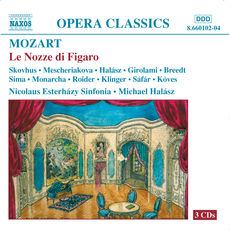Our columns have already hosted tests of devices from the Chinese brand Shanling, among which the portable DAC H3. Today, it’s up to the brand new portable USB DAC from the brand, called Up, to be the subject of a Qobuz testing ground, and the first thing we asked ourselves was why this name was chosen.
Is it some kind of arrogance, given the announced compatibilities and specifications and their staging? It works on PC and Mac computers, it’s compatible with OTG Android and certified MFI (Made For iPod/iPhone/iPad)—this point being a reassurance to a whole range of potential buyers—, it supports PCM signals up to 24-Bit/192 kHz and DSD64 and 128, in native mode depending on the manufacturer, whose decoding are handled by an ESS SABRE ES9018K2M chip.
To cap it all, this DAC possesses a gain selector switch which allows it to be used with a wide selection of portable audio headphones of low or medium impedance and benefits on the manufacturer’s website from a staging worth of a movie star.
What will this tantalizing communication be like once this testing ground dedicated to this Shanling Up DAC is completed?
Presentation
It’s hard to be as exuberant as usual for Shanling with such a minuscule device like the Up DAC, so it’s a very sober but very classy design that has been chosen. And this is indubitably Up!
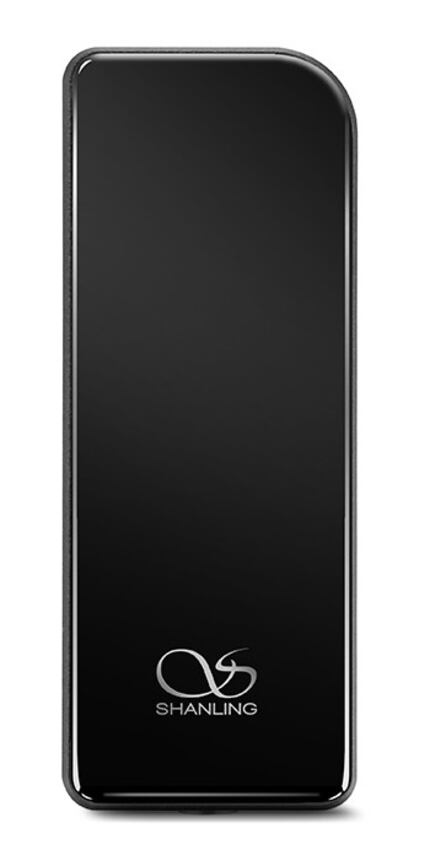
So, the top side, which lets the light of a small white/blue/red tricolored LED shine through, is made of 2.5D Glass, actually a thin plate with rounded edges, while the other four angles of the box also present a curve, and the one from the back, where is located the USB C connector, is even rounder than the others.
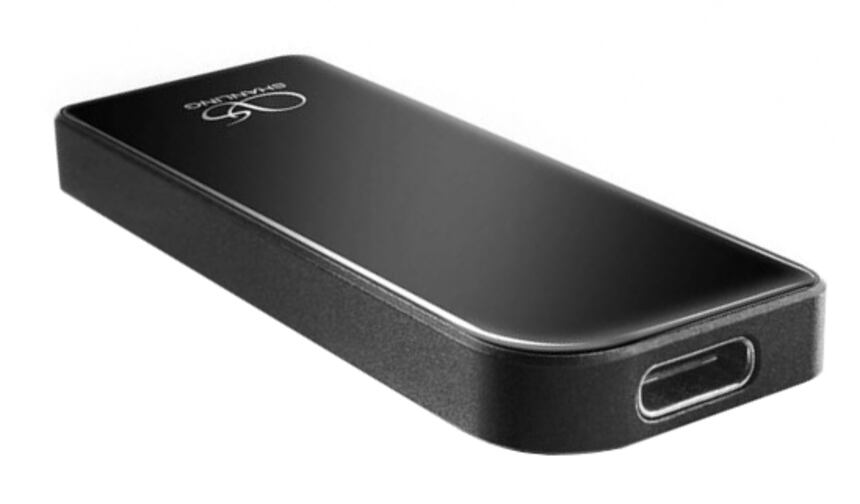
On the facade, the 3.5mm standard headphone Jack sits next to a tiny slide switch that allows you to select between a low or high gain for the headphone amplifier.
Manufacturing
When we opened the box of the Shanling Up DAC, to our great surprise, we discovered that it was HiBy Music, the company that developed the HiBy Music application for pour iOS and Android, that manufactures by itself this USB interface by programming FPGA (field-programmable gate array) circuits.
This HiByMusic USB interface is followed by a SA2000 processor which synchronizes the digital audio files and extracts the buses required for the functioning of the ES9018K2M digital-to-analog conversion chip from the American brand ESS, designed for portable devices by being very power-efficient.
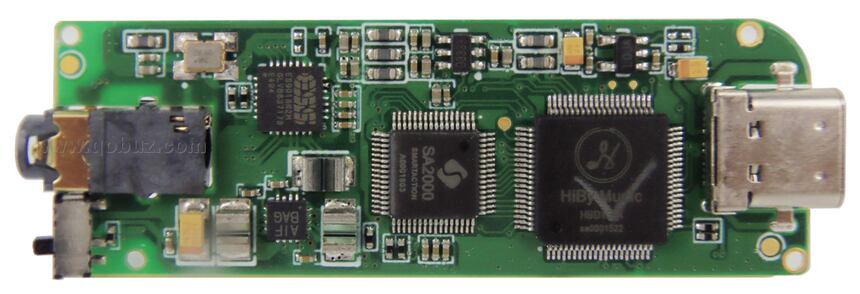
This ES9018K2M chip uses the proprietary technologies Hyperstream® DAC architecture and the Time Domain Jitter Eliminator from ESS. Explaining the latter doesn’t seem necessary, but the former involves a 32 bits resampling at high frequency of each and every digital signal, whatever their original sampling and their type, PCM or DSD, in order to claim, among other things, a signal to noise ratio of 127 dB.
You can also see on this side of the circuit the Maxim MAX97220A headphone amplifier, able to provide 65 mW in 32 Ω, as well as high quality plastic layered coupling capacitors.
On the other side are located the two oscillators from the SA2000 (22.579 and 24.576 MHz) for the synchronization with the digital audio signals, as well as the one from the HiByMusic interface (24.000 MHz), and also the filter of decoded signals made with a National Semiconductor LM4562 high-performing very low noise operational amplifier.
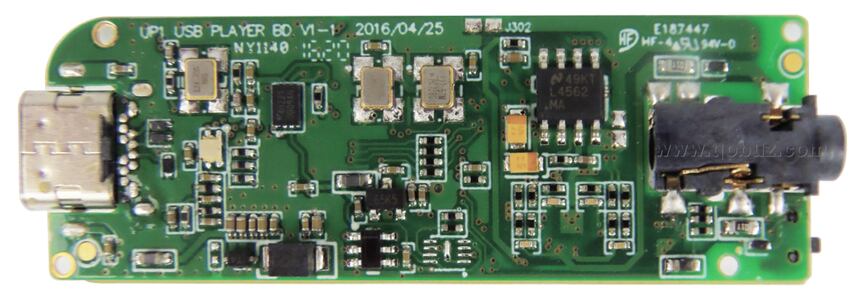
Sound
Once the HiByMusic software was installed on our Android tablet, it scanned all the audio files on it and we selected among those Another One Bites The Dust from Queen’s album
Okay, this Shanling Up DAC is not that big, but it got some teeth, and we don’t have to push the volume on our tablet to feel a good sound pressure coming from the transducers of our Oppo PM-3 headphones. For sure, this title is rather in your face and rich in bass, that the DAC’s amplifier reproduces with power and firmness and provides without effort some rather high sound levels.
The same applies to the titles North Star and Silent Space from the album Tale Of Us streamed from our iPad in Hi-Res with the Qobuz app, but we felt that the maximum reachable sound level was a little lower, even when we fiddled with the gain, but we had a lot of fun nonetheless!
But what about music that rely a bit more on harmony and subtlety, like My Sweet Lord from George Harrison’s album My Sweet Lord from the album All Things Must Pass?
It is pretty obvious to our ears that an ESS chip has been used, with pronounced guitar riffs from the first seconds, and choruses that are also very much present. This isn’t unpleasant but a bit too characteristic, but the issue of our feelings on classical music still has to be settled.
Let’s play Henry Wood’s Fantasia on British Sea Songs then. It’s going pretty well, with a rather light ESS sound signature in a global restitution that is both vivid and keen on finely crafted musical sensations that go straight to the point: providing pleasure.
To be a bit more precise concerning the Qobuz app, if the playback with this DAC goes well on iOS (the device is certified MFI), you apparently have to use the USB Audio Player Pro app on Android, as the Up refuses to work with our application only, probably because of the specificity of the HiByMusic USB interface.
Not Up as well, and we haven’t gone through any problems with our personal computer on Windows 8.1, even if the driver installation requires a bit of know-how by forcing you to go to the Control Panel (download and decompress the driver in the folder of your choice, and follow this tutorial) and it was impossible for us to configure Foobar2000 for DSD playback in native mode—we blame the really poor user manual. But it was impossible for use to install this DAC on our professional PC running Windows 7, and yet we tried our best to do it.
That being said, let’s go back to our DAC with which we listened to, via Foobar2000 on Windows 8.1, several extracts from the Marriage of Figaro and that offered us of this interpretation a particularly bright restitution, with voices both beautiful and clear, and a rich and subtle orchestral accompaniment.
To conclude, with the exception of the really poor user manual preventing everyone to fully exploit the possibilities offered—or supposed to be offered—by this device, whose price and mode of operation seems rather in line with the Apple devices with which he claims the MFI compatibility and is really plug and play, this Shanling Up DAC is a really elegant device offering a sound restitution able both of a great sophistication and of letting the punchier music be expressed with strength.
We would like to thank Audiophonics for lending us the Shanling Up.
Shanling Up DAC
||About the Shanling Up DAC|| |Type:|Autonomous digital-to-analog converter with headphone amplifier| |Function:|Transforms digital audio data into audible sounds and amplifies them| |Conversion:|Up to 24-Bit/192 kHz and DSD64 and 128| |Converter:|ES9018K2M| |Digital Inputs:|USB C compatible with MFI| |Digital outputs:|None| |Audio outputs:|Headphones on 3.5mm Jack| |Headphone amplifier / power:|Maxim Max97220A / 2 x 65 mW/32 Ω| |Dimensions (L x H x P):|24 x 7,2 x 62| |Weight:|0.46 ounces (13 g)| |Design/Manufacturing:|China/China| |R.R.P.:|About 150 euros| |Contact:|Audiophonics|
It was impossible for us, for lack of information and other elements (ASIO driver), to set up the DSD playback on Foobar2000 in any other way than by choosing PCM conversion, and therefore not in native mode. However, it allowed us to play our 2L.no DSD test files from DSD64 to DSD256.


